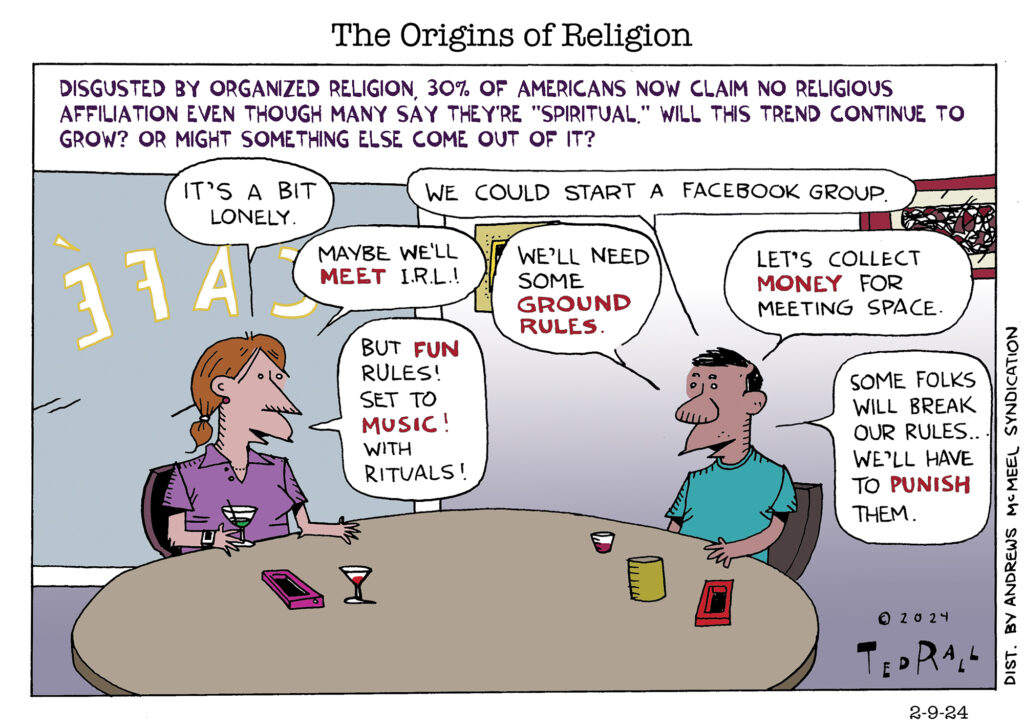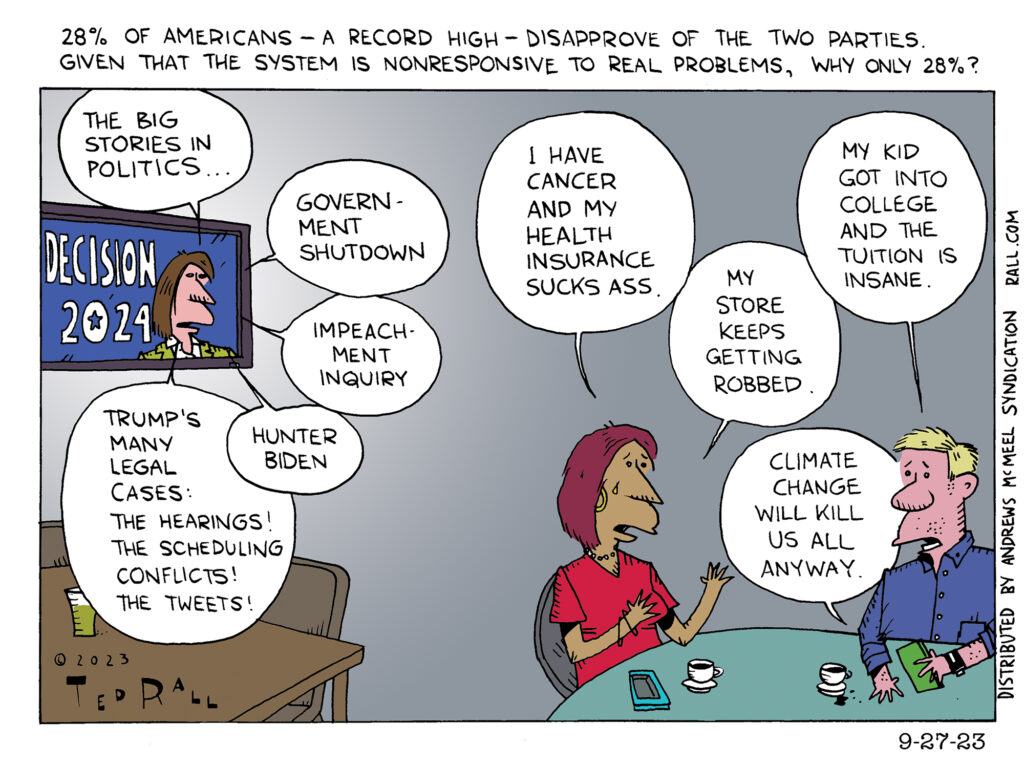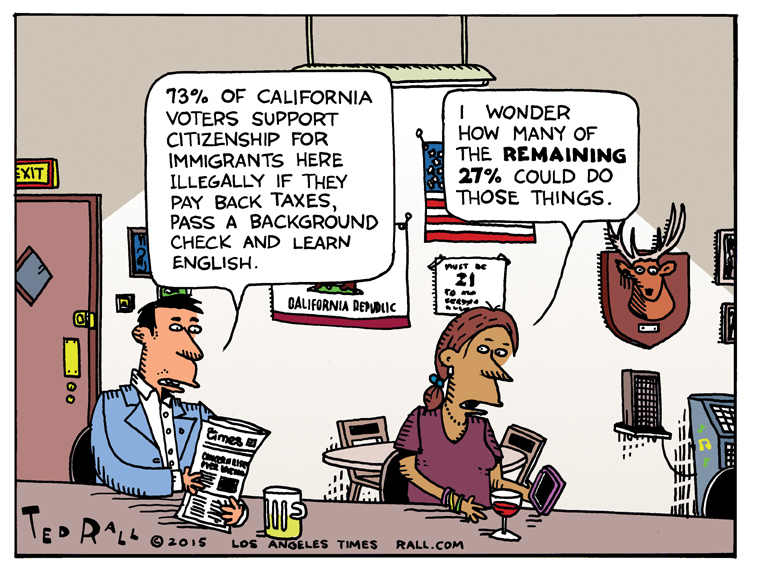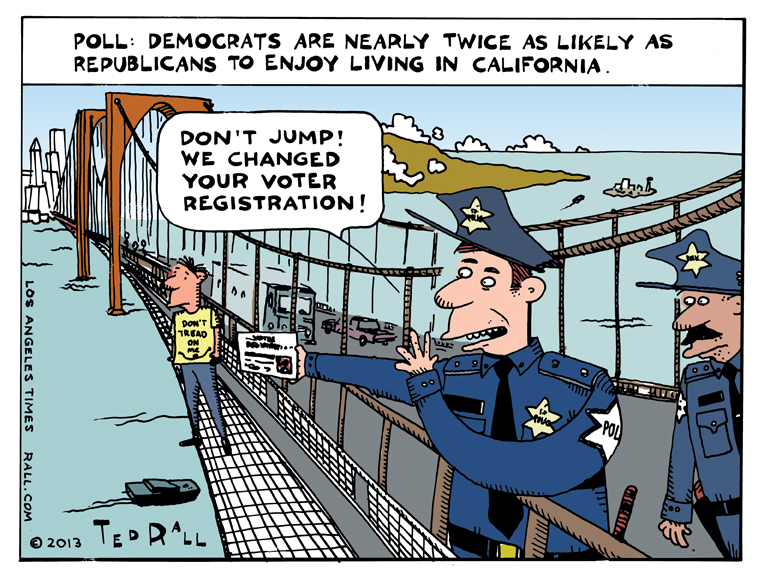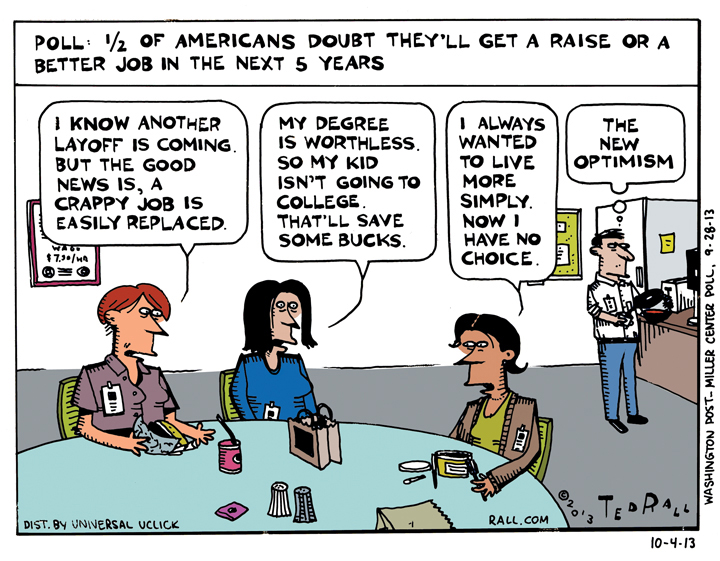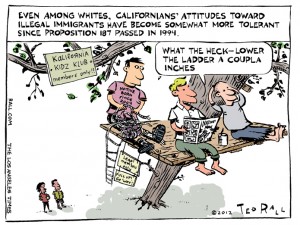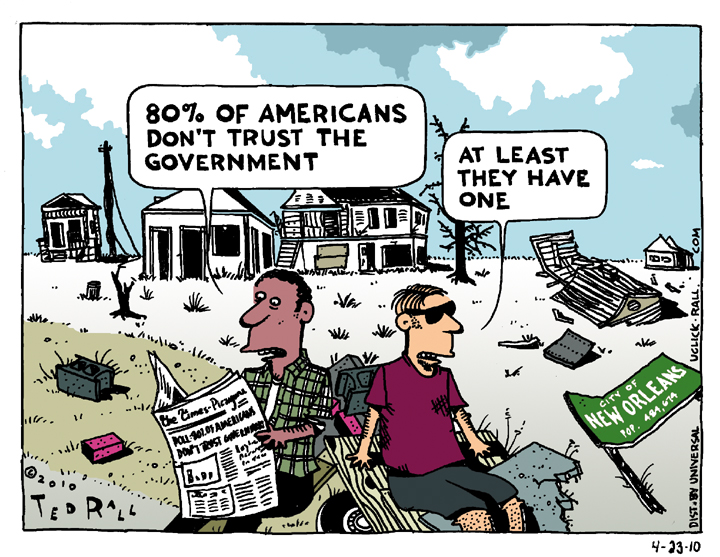Disgusted by organized religion, 30% of Americans now claim no religious affiliation even though many say they’re “spiritual.” Will this trend continue to grow? Or might something…else…come out of it?
Distract-ocracy
28% of Americans, a record high, tell the Pew Research poll that they are disgusted by both major political parties. It’s not hard to imagine why; the system is distracted by impeachment and other inside the Beltway issues while bread and butter problems that affect ordinary people get ignored by the political class.
Transgender People Shouldn’t Compete in Sports. Neither Should Cis People.

A new Washington Post poll about Americans’ views of transgender athletes offers a lot to think about. I found the margins more interesting than the headline. Like, who are these 2% of people who think that transgender girls are at a physical disadvantage when they compete against cis girls in youth sports? Why would they think that?
Another takeaway is that 16% of respondents have a close friend or family member who is transgender. One in six! As a writer and cartoonist who works from home—but in New York, the most diverse city in the country—clearly I need to get out and meet more people. Last week a Pew poll found that 1% of Americans are nonbinary, a figure that rises to 3% for people ages 18 to 29. I know hundreds of people, including lots of Millennials. How come I don’t know anyone nonbinary in a country with 3.3 million of them?
But what I’ve been thinking about most is an issue that is so baked into our society that it is no issue at all: the idea that competition is a good thing.
Most respondents to the Post survey oppose allowing transwomen to participate against cis women in competitive sports at any level. Yet a majority are also concerned that the mental health of transgender athletes might suffer as a result of such a ban—meaning that, even among some of those who view such competition as unfair, some worry that transwomen athletes denied the opportunity to compete against other women in sports will suffer psychological damage.
It’s an intractable issue. As transgender athletes have argued, segregation by gender in sports is in and of itself arbitrary since some cis women have inherent biological advantages over some cis men. Any attempt to make physical competition fairer, as with weight classes in boxing and wrestling is inherently arbitrary. Where does it stop? Shall we have separate basketball leagues based on the players’ heights? Should the 152-to-164 lb. weight class be split up more finely? Down to the ounce?
There is little political appetite for allowing everyone to compete against one another regardless of sex or gender, and for obvious reasons: in most sports, people who are born male have bigger and stronger bodies, and hormonal advantages, on average than those born female. Eliminating the gender divide would effectively downgrade half the human race to intramural athletes, with no chance to win anything more than the joy and satisfaction of participating.
But then, what’s so great about competition? Personally, this cis male has always found competition of all kinds — in sports, at work, in the arts — to be toxic.
I attended elementary school in the mid-1970s, when soccer was first gaining a foothold in the United States. In my Ohio town it started out as exclusively intramural. I signed up and loved it. (It’s not relevant here, but I was pretty good.) Then they converted the intramural league to the competitive teams we have today. Coaches, and then players, got serious about winning. They turned mean. Grown men ordered us kids to target the best player on rival teams and injure them so that they couldn’t play. It wasn’t fun anymore so I quit.
Competition ruined every sport I tried: track, wrestling, baseball. Winning was the only thing that mattered. My teammates quickly took to trash-talking batters; I found the practice foul. To me, play is not something that you do at the expense of other people. I’m not alone: Survey data shows that 70% of kids drop out of organized sports by age 13.
Studies show that competition causes depression, anxiety and self-harm. And no wonder! Competition turns everyone but the winner into losers. The practice of my professors at Columbia University School of Engineering, who graded on a curve, illustrated the absurdity of America’s winner-take-all culture. No matter how brilliant the students in a class, half of us would receive an F. Objectively, of course, we were all superb at math and science and we all worked hard; we wouldn’t have been admitted otherwise. Objectively, we all should have gotten As. Instead, CU set up a system where they took thousands of students who were by far the best in their high schools, and turned three-quarters of them, me included, into expelled losers, unemployed with thousands of dollars in student loans.
Because of competitive grading, 49% of students feel a great deal of stress on a daily basis. Educators should consider following the example of Hampshire College, which does not issue letter grades.
If you have held a job, you know how dispiriting workplace competition can be. Brownnosers prevail over those who work harder. Intelligent workers get passed over in favor of those who don’t threaten their colleagues with difficult questions. Unfair promotions piss people off. Workers are more likely to quit a job after a colleague gets promoted than one in which no one gets promoted.
Competition in the arts is silly and destructive. What makes a song or a sculpture or a cartoon “better” than another one? It’s purely a matter of subjective taste. Who receives the Oscar or the Tony or the Nobel usually has far more to do with contemporary politics and the composition of the prize jury than the quality of the work.
Columbia University, which administers the Pulitzer Prize, has decided to abolish the editorial cartooning section in favor of a broad illustrated commentary category that also includes comics journalism, comic strips, graphic novels, magazine illustrations, you name it. Effectively they have reduced an editorial cartoonist’s chance of winning a Pulitzer from slim to none, which is bad for a nearly-extinct profession, which is why I added my name to a petition letter opposing it.
In a way, though, they’ve done us a favor. With few exceptions, each year’s announcement of the winners and finalists has been followed by a flurry of phone calls between the 99% of us who lost. We disagree with the choice of the winner. We bemoan the great work that’s been snubbed. We wonder what the hell happened in the room where it happened; what were the jurors thinking and why are their deliberations unaccountable? Most of all, we wonder what we could have done, if anything — spoiler, probably nothing — to have won ourselves? Even the winner is a loser, because for they know that few others are happy about their victory. I’ve been at this for more than a quarter of a century and I can’t remember any winner being greeted by anything close to universal acclaim by his or her colleagues.
If you can’t win, you can’t lose.
(Ted Rall (Twitter: @tedrall), the political cartoonist, columnist and graphic novelist, is the author of a new graphic novel about a journalist gone bad, “The Stringer.” Order one today. You can support Ted’s hard-hitting political cartoons and columns and see his work first by sponsoring his work on Patreon.)
Inflation Has Been Killing You for 40 Years. Why Are You Noticing Now?

Far be it from me to carry water for the Biden Administration or to downplay the impact of inflation on working families as White House officials did in June when they dismissed rising prices as merely “transitory.” When 87% of Americans say they are very or extremely worried about higher prices, and one out of ten people say they can’t afford to buy holiday gifts this year, it’s a serious issue.
Still, you can see why ruling elites are a little mystified by the collective freak-out, and it’s not just because they’re rich so they don’t care (although that’s true).
Truth is, nothing new is happening.
Real inflation has been soaring for four decades. What changed is the artificially-deflated official inflation rate. Which is why people are finally paying attention.
Presidential administrations have repeatedly changed the methodology the Bureau of Labor Statistics uses to calculate the U.S. inflation rate. Why? Politics, of course. The government wants to fool voters into thinking that they are better off, or at least thinking that they aren’t losing ground as quickly as they actually are. Lowballing price increases also saves the Treasury money on big costs like Social Security payouts, which are tied to the official inflation rate.
Housing, food and fuel account for a significant share of typical household expenses, but because they have been rising steadily in price for years, the feds keep lying about how much people really spend on those items. They’ve also factored in “shadow inflation”—the relative cost from year to year of, for example, a phone, is discounted going forward because an iPhone is of higher-quality, with more features, than Ma Bell’s “old reliables.” In reality, of course, you need a standard phone—which, today, is a smartphone. It’s not like you can time-travel back to 1980 to buy a rotary dial. So the BLS doesn’t count a $1000 iPhone as a significant price hike over a $20 plug-in model.
John Williams’ Shadow Government Statistics presents inflation the old-fashioned way, as it was calculated in 1980. The difference is significant, often as much as 10% per year. In September, for example, Forbes reported that the BLS announced the official inflation rate to be 5.4%. But the “real” inflation rate was 13.4%.
According to the official inflation rate, an item that cost $100 in 1980 now costs $336. Because inflation—official inflation—ticked up a few percentage points each year, it has not been a major political issue over the last 40 years.
No one was paying attention to the truth: inflation has been destroying living standards for many years. According to Shadow Government Statistics, due to exponential calculations that $100 item in 1980 now costs about $2,200. But median family income has stagnated; a $100 paycheck in 1980 is now a $335 paycheck, almost exactly the official inflation rate. Wages haven’t come close to keeping up, except for the top 1%. They’re doing great.
Median monthly rent has skyrocketed from $243 in 1980 to $1098 this year; median house-purchase price rose from $47,200 to $382,000. Gas was $1.19 per gallon; now it’s $3.41. College tuition, room and board was $3,900 and is currently $35,720.
So inflation is an ongoing problem. The only thing that’s new is that we are noticing it because it’s being reported. Although, it’s important to note, the inflation rate that is tanking Biden’s poll numbers is still being radically downplayed.
Because the rate is now high enough to register officially, Joe Biden is the first president since Jimmy Carter to be blamed for inflation. Reagan, both Bushes, Clinton, Obama and Trump had high inflation too—but they got off scot-free.
“There is a psychology to inflation that is different from everything else, and it tends to drive how people view the economy because they experience it every day whether it is at the grocery store, gas pump or buying household goods,” says Democratic pollster John Anzalone. As the last 40 years prove, though, the government is also very good at convincing people not to believe their own lying eyes.
(Ted Rall (Twitter: @tedrall), the political cartoonist, columnist and graphic novelist, is the author of a new graphic novel about a journalist gone bad, “The Stringer.” Order one today. You can support Ted’s hard-hitting political cartoons and columns and see his work first by sponsoring his work on Patreon.)
SYNDICATED COLUMN: How the Media Manipulated the Democratic Primary
 Though it might not always seem like it, the news media is composed of human beings. Humans aren’t, can’t be, and possibly shouldn’t be, objective. Still, there’s a reasonable expectation among consumers of political news that journalists of all political stripes strive to be as objective as possible.
Though it might not always seem like it, the news media is composed of human beings. Humans aren’t, can’t be, and possibly shouldn’t be, objective. Still, there’s a reasonable expectation among consumers of political news that journalists of all political stripes strive to be as objective as possible.
At their minimum, media outlets ought to be straightforward about their biases.
They certainly shouldn’t have, or appear to have, their thumbs on the scales.
Unfortunately, all too often, it appears that the political system is rigged – and that the major media companies play an important role in gaming the system. That’s what has happened throughout this year’s Democratic primaries, in which the vast majority of corporate media outlets appear to have been in the bag for Hillary Clinton, the establishment candidate, against self-described “democratic socialist” insurgent Bernie Sanders.
Examinations of coverage have confirmed the impressions of cable news junkies that Sanders has been the victim of a blackout, thus depriving him of a chance to make his case to voters. When the chairwoman of the Democratic Party, Debbie Wasserman Schultz, scheduled the first round of Democratic debates at times the party hoped nobody would be watching – again, a seemingly obvious ploy to deprive Sanders of exposure – corporate media outlets had little to say about it.
Then there has been the media’s complicity in spreading Clinton campaign talking points that bore little relation to the truth.
MSNBC and other DNC-aligned media outlets kept pointing out that Clinton won 3 million more votes than Sanders. True, technically. But that’s pretending that caucus states didn’t exist. Sanders did better than Clinton in caucuses.
Most recently, they conflated pledged delegates – those won by a candidate based on votes cast – with superdelegates, the Democratic politicians and party officials who will be able to vote however they want at the convention this coming July. Back in November, an Associated Press survey found that Hillary Clinton – unsurprisingly – enjoyed the support of the vast majority of the superdelegates. Assuming that the superdelegates will not change their minds, the AP called the Democratic race for Hillary Clinton on Monday, the night before a set of important primaries, including California. Does anyone doubt that calling a race over as the effect of depressing voter turnout?
It’s impossible to quantify that effect, to know how many people didn’t bother to show up at the polls because they were told it was all over. In California, however, Hillary Clinton won 56% of the vote in a state where polls showed the two candidates neck and neck. (California’s state election officials also did their best to keep voters away from the polls.)
As a journalist, I’m reluctant to categorically argue that the AP ought to have held its statistical analysis of the race until after Tuesday’s vote. News ought not to be suppressed. When you have it, you ought to report it. Similarly, I’m not sure that the New York Times was wrong to report the AP story. However, I do question the editorial wisdom of running it as a banner headline. The United States is a democracy. We elect our leaders based on votes actually cast by real people, not polls. Even after Tuesday’s vote, Hillary Clinton still didn’t have enough pledged delegates to claim the Democratic nomination. Since those superdelegates aren’t going to vote until July, she won’t be able to really claim the nomination until then.
Agreed, it’s a silly system. But it’s the system the Democrats have. They – and the media – ought to abide by it. Besides which, think how embarrassing it will be if the Justice Department indicts Hillary between now and July. There’s a lot to be said for leaving things hanging.
The thing that disgusts me most about this system – besides the perpetual state of war, the manufacturing of mass poverty, the prison industrial complex, the miserable state of the justice system, the fact that it’s impossible to make a decent living working 40 hours a week – is that it doesn’t even pretend to follow its own rules in a consistent way. Consider, for example, how the New York Times couldn’t wait to report its “Hillary Clinton becomes first woman nominee from a major political party” story until after the primaries in California et al. Would one or two days have made a big difference? (Well, yes. Sanders might have won California.) If the idea is to get the story out first, no matter what, even if it suppresses the vote, I can respect that. But then they ought to be consistent.
It was a very different story back in 2004. A few weeks before the general election in November, the New York Times researched and came to the conclusion that George W. Bush, the incumbent, may have cheated in at least one of the presidential debates against Sen. John Kerry. Photographs of the debate clearly showed a suspicious bulge in Bush’s shoulder; the Times did report the story as a light he-says-she-says piece. But then experts concluded that the tongue twisted former governor of Texas had been using a receiver paired with an earphone in order to get advice and retorts to carry from an unknown co-conspirator.
Editors at the paper decided to hold a serious exposé until after the election so that its coverage would not affect the results. Then they killed it. Four more years of Bush followed.
Actually, the corporate media’s policy is brutally consistent. If holding a story benefits the forces of reactionary conservatism, it gets held. If releasing it does so, it gets released. Time after time, the system exposes itself for what it is.
(Ted Rall is the author of “Bernie,” a biography written with the cooperation of Democratic presidential candidate Bernie Sanders. His next book, the graphic biography “Trump,” comes out July 19th and is now available for pre-order.)
Could the anti-immigrant loudmouths pass a U.S. citizenship test?
Originally published by The Los Angeles Times:
To listen to talk radio and cable television, which are dominated by conservatives, the national and state debates over immigration give the impression that most legal residents of the state of California oppose immigrant workers here illegally and might even be favorably disposed to Mitt Romney’s suggestion that they “self-deport.”
It’s not a crazy assumption. After all, state voters in 1994 overwhelmingly approved Proposition 187 – which prohibited people here illegally from using such public services as schools and healthcare.
As it turns out, however, the voices of anti-immigration forces are disproportionately louder than their actual numbers.
A new poll of likely California voters shows that a whopping 73% support granting citizenship to immigrants here illegally if they agreed to pay back taxes, pass a background check and learn the English language.
Support for legalizing the status of people currently living in the shadows is not only majoritarian, but broad. “Even 61% of Republicans favored it, although nationally GOP politicians have been the biggest obstacle to immigration reform. All ethnic and age groups strongly supported such citizenship. So did every California region, whether blue or red,” writes Los Angeles Times columnist George Skelton.
At this point, it’s clear that nativists have lost the argument. Although I am and have always been sympathetic to the concept that a nation-state isn’t truly sovereign if its borders remain unguarded, the reality is that there are at least 10 million people in the United States illegally. There are about 2.6 million in California, accounting for about 10% of the workforce. ] It’s also ironic that we demand that people who come to the United States learn English, yet 14% of U.S. adults can’t read. Should we throw them out? –
They’re already here. They’re working. They’re our friends, our neighbors, our colleagues, our loves and our spouses. Fortunately, there isn’t the political will to deport them. Since these workers are not going anywhere, it seems ridiculous to condemn them to being terrified every time the cops pull them over for speeding.
Seems to me that immigration opponents ought to focus not on the people who are here and who should be grandfathered in, but on preventing future illegal immigration by lobbying Congress to build an impermeable border between the United States and Mexico.
Of course, they’re not likely to get very far, since both major parties have a vested interest in the status quo. Immigrants here illegally represent future Democratic voters and are easily exploited by the business interests near and dear to the Republican Party. The GOP must draw votes from Latinos if it’s to remain viable in a nation in which the demographics are becoming less white.
Today’s cartoon is partly a jab at the anti-immigration types who pretend to be motivated by economic or patriotic motives but are really just racist. It is also a reference to the fact that many native-born Americans would have trouble jumping through the hoops required of those seeking to become naturalized citizens.
A 2012 study found that one out of three native-born American citizens would fail the civics section of the test administered to those applying for U.S. citizenship. Among the highlights: 85% couldn’t identify “the rule of law” – well, maybe that’s because they’ve been watching one president after another ignore it – and that 75% didn’t know what the judiciary does. Also, 62% couldn’t identify the governor of their state.
As for the requirements that the 73% say they would impose on people here illegally, I wonder how many people with legal status could survive an IRS audit that required them to pay all the taxes on income they’ve failed to declare since they turned 18 … or would be able to cough up the dough.
It’s also ironic that we demand that people who come to the United States learn English, yet 14% of U.S. adults can’t read. Should we throw them out?
Here’s an idea: Let’s deport everyone who can’t pass the basic requirements to become an American citizen, whether or not they were born here.
The country will empty out in no time.
LOS ANGELES TIMES CARTOON: Dems Luv Cali
I draw cartoons for The Los Angeles Times about issues related to California and the Southland (metro Los Angeles).
This week:
According to a new poll, “Californians’ perceptions about living in the Golden State are fractured along political, geographic and generational boundaries.”
Is California one of the best places to live? 53% of Democrats say yes. Only 26% of Republicans do.
Even if you’re liberal, the knowledge that conservatives are bummed out about living in the same state that you consider paradise has to give you pause. After all, you’re liberal. You’re supposed to care about other people — especially other people who tell you that they don’t care about you.
Also, you might ask yourself: what if I’m wrong and they’re right? What if California really is hell on earth? Does that make me…crazy?
What I want to know, and the poll does not and cannot reveal, is why members of the two major parties view the state’s quality of life so differently. Is it political — are Republifornians chafing under Governor Jerry and a Sacramento dominated by his Dems? Or does it reflect different worldviews? When Republicans look at the sky, do they see a different hue? When they hear the words “Miley Cyrus,” do their hearts quiver at an alternate frequency?
What about third parties? How do Greens and Libertarians enjoy/hate living here?
Anyway, this cartoon falls into the “illustrative” category of the political toon genre — a piece that doesn’t take an editorial stance, but rather shows what’s going on for its own sake. I have often been critical of this type of cartooning, but I make exceptions (hey, to be human is to be a hypocrite) for cartoons that highlight minor blink-and-you’ll-miss-it stories that have, or may have, broad implications.
Which this one is.
Now that you know that right-wingers dislike living in California, maybe you should consider being nicer to the dude in the monster truck-sized SUV who cuts you off if it has a Tea Party bumper sticker. Chances are, he’s depressed enough us as it is without you honking at him.
Also, he’s more likely to be armed.
LOS ANGELES TIMES CARTOON: Lower the Ladder a Little
I draw cartoons for The Los Angeles Times about issues related to California and the Southland (metro Los Angeles).
This week: In the nearly two decades since Californians voted to bar undocumented immigrants from utilizing public schools and hospitals, the state’s electorate has become increasingly tolerant toward people who are in the country illegally, although it remains tough on border security and enforcement, a new USC Dornsife/Los Angeles Times poll shows. The shift is partly explained by the growing clout of Latinos, who now make up 20% of California voters. But the attitudes of whites also appear to have changed.

